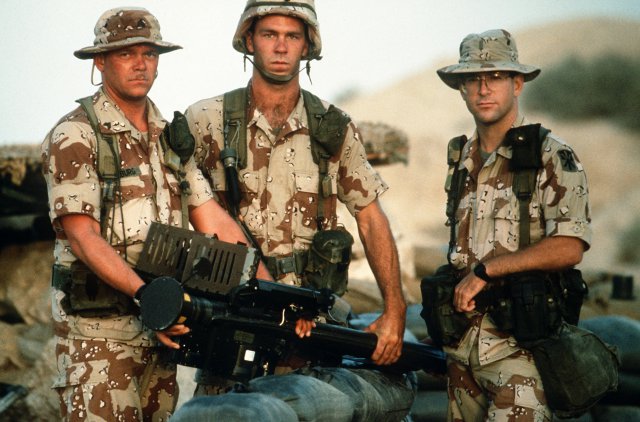Gulf War Veterans Remain at Risk of Gulf War Illness Years Later

CCK Law: Our Vital Role in Veterans Law
About the GWI Study
Chronic multisymptom illness/Gulf War illness (CMI/GWI) is the defining illness of the 1990-1991 Gulf War; however, few studies have examined changes over time in the prevalence of these conditions. Understanding the burden of chronic multisymptom illness/Gulf War illness (CMI/GWI) as Gulf War veterans age is critical to estimating current and future health care needs. As such, the most recent study, “Prevalence of Chronic Multisymptom Illness/Gulf War Illness Over Time Among Millennium Cohort Participants, 2001-2016” aimed to address this matter further.
Previously, the few studies that had looked at symptom prevalence longitudinally only included two points in time. Results from these studies indicated that the higher burden of symptoms among Gulf War veterans relative to non-deployed reference groups persisted over time. Yet, there were inconsistent findings regarding rates of symptom change, with some studies finding no differences when compared with non-deployed reference groups, while others observed more rapidly increasing symptom prevalence among Gulf War veterans.
This study represents the largest prospective military cohort study conducted to date and has enrolled over 9,000 Gulf War veterans who have completed up to five assessments since 2001. The three aims of the study were as follows:
- To describe the prevalence of CMI/GWI from 2001 to 2016 in deployed Gulf War veterans relative to non-deployed Gulf War era personnel (era personnel) and personnel not serving during the Gulf War era (non-era personnel);
- To determine how the prevalence of CMI/GWI changes over time and whether it changes at different rates among Gulf War veterans as compared to the reference groups; and
- To conduct analyses stratified by race and ethnicity to address the need for additional information about CMI/GWI among women and racial/ethnic minorities.
Overview of the Persian Gulf War
The Persian Gulf War includes service in the Southwest Asia theater of military operations beginning on August 2, 1990. At the present time, the period for the Persian Gulf War extends to December 31, 2026, which means that service members who have served in the Southwest Asia theater of military operations after September 2001 are eligible for benefits under VA’s Gulf War presumption. VA considers service in the following countries and locations as Gulf War service:
- Bahrain
- Gulf of Aden
- Gulf of Oman
- Iraq
- Kuwait
- Qatar
- Saudi Arabia
- The United Arab Emirates
- Waters of Persian Gulf, the Red Sea, and the Arabian Sea
- The airspace above these locations
Veterans of Operations Desert Storm and Desert Shield meet the criteria for qualifying service during the Persian Gulf War, as do veterans of Operation New Dawn, Operation Iraqi Freedom, and in some instances, Operation Enduring Freedom. Although no official end to the Gulf War has been declared, for the current study, the Gulf War period was restricted to August 1, 1990 to July 31, 1991. This period encompassed the active conflict as well as many environmental hazards, including smoke from burning oil well fires and sarin/cyclosarin dispersion resulting from munition disposal at Khamisiyah.

How the Study was Conducted
The prevalence of CMI/GWI over time was compared between three groups of military personnel (9,110 Gulf War veterans; 36,019 era personnel; and 31,446 non-era personnel) enrolled in the Millennium Cohort Study. Participants completed a baseline survey in 2001 and completed follow-up surveys approximately every three years thereafter. The fifth and most recent survey was completed between 2014 and 2016.
Measurements
CMI/GWI
Generally speaking, CMI/GWI is a complex medical condition that presents as a cluster of chronic, medically unexplained symptoms such as fatigue, pain, gastrointestinal symptoms, respiratory symptoms, dermatological symptoms, and neurological symptoms. In the study, CMI/GWI was defined using a modified Center for Disease Control (CDC) definition consisting of endorsement of at least one item within at least two of the following clusters:
- Fatigue cluster – consisted of two items: (1) unusual fatigue; and (2) having a lot of energy;
- Musculoskeletal cluster – consisted of unusual muscle pains; back pain; and pain in arms, legs, or joints;
- Mood-cognition cluster – consisted of items assessing forgetfulness, confusion, trouble sleeping, nervousness/anxiety, feeling downhearted/blue, irritability, and trouble falling/staying asleep
Pesticide Exposure
Pesticide exposure was assessed on each survey from two items regarding personal (e.g. creams, sprays, uniform treatments, etc.) and environmental pesticide exposure. Importantly, Gulf War veterans were more likely to report potential chemical/biological agent exposure and receipt of the anthrax vaccine than era personnel and non-era personnel.
Results of the GWI Study
The study found that CMI/GWI prevalence increased substantially over the study period among all groups. However, Gulf War veterans had the highest prevalence of CMI/GWI across the study period. This finding persisted after excluding participants with reported mental and physical health conditions unrelated to their CMI/GWI. Specifically, prevalence of CMI/GWI was 28.4 percent among Gulf War veterans, 18.7 percent among era personnel, and 23 percent among non-era personnel. Furthermore, Gulf War veterans without CMI/GWI at baseline were likely to screen positive later in the study period.
In addition to Gulf War deployment status, deployment during Operations Enduring Freedom and/or Iraqi Freedom was associated with greater odds of screening positive for CMI/GWI. Finally, results stratified by sex and race/ethnicity found that racial/ethnic minorities and women were at higher odds of CMI/GWI.
Implications of the Study
Again, the current study has the longest follow-up and most assessments of any published study examining CMI/GWI among Gulf War veterans to date. It is also the first to examine CMI/GWI among the Gulf War and Gulf War era personnel enrolled in the Millennium Cohort Study. Researchers observed a significant association between Gulf War deployment and CMI/GWI, a finding that is consistent with previous studies. Associations between Gulf War deployment and CMI/GWI remained consistent even after excluding individuals with physical or mental health conditions, which suggests that although personnel with mental and physical conditions were likely to screen positive for CMI/GWI, the increased prevalence of CMI/GWI among Gulf War veterans was not attributable to mental health conditions.
Gulf War veterans’ increased risk of CMI/GWI persisted across the study period, highlighting the continued importance of screening and improving treatment options among this population. More research is needed to better understand the underlying associations between mental health and CMI/GWI. Limitations of the study include the following:
- The definition used for CMI/GWI was a modification of the CDC criteria similar to those used in previous studies, which has been criticized for being too liberal.
- The sample excluded individuals who separated from the military before 2000, including those precluded from continuing their military service due to health concerns following their Gulf War service.
- Current analyses may underestimate the prevalence of CMI/GWI.
Nonetheless, this study is one of the few data sources that can describe how prevalence of CMI/GWI changes over time.
About the Author
Share this Post
